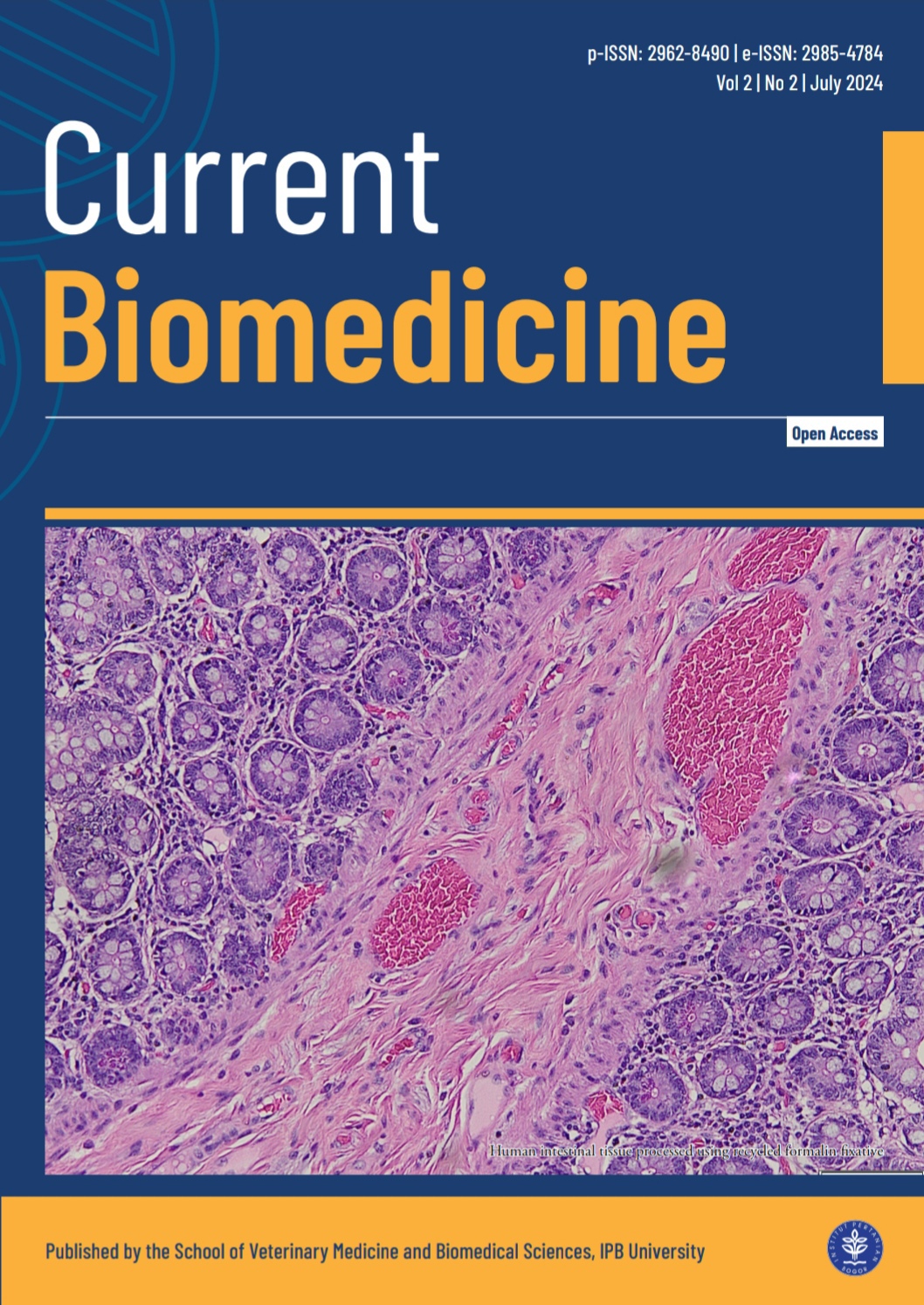Goblet cell hypertrophy in small intestines of free-range chicken in Jakarta traditional market infected with cestode worms
Abstract
Background: Free-range chickens are one of the animal protein needs people often look for. Maintaining free-range chickens with a free cage system predisposes them to infection with gastrointestinal parasites. Objectives: This study aims to determine epithelial cell changes and hypertrophy of digestive tract goblet cells in free-range chicken infected naturally with Raillietina spp. worms. Methods: This study used seven archival slides of small intestine histopathology of free-range chicken infected with cestode worms. Small intestines of free-range chicken samples were taken from two markets: Pluit market in North Jakarta and Kebayoran Lama market in South Jakarta. Results: Histopathological observations on intestinal slides found desquamation of villous epithelium and proliferation of crypt cells caused by cestode worm infection. The highest number of hypertrophied goblet cells was found in slide samples from the Kebayoran Lama market, South Jakarta. However, it did not have a significant different (p>0.05) in cestode infection. Conclusion: It can be concluded that the desquamation of villi and an increase goblet cell hypertrophy occur due to cestode worm infection in the small intestinal mucosa of free-range chicken.













